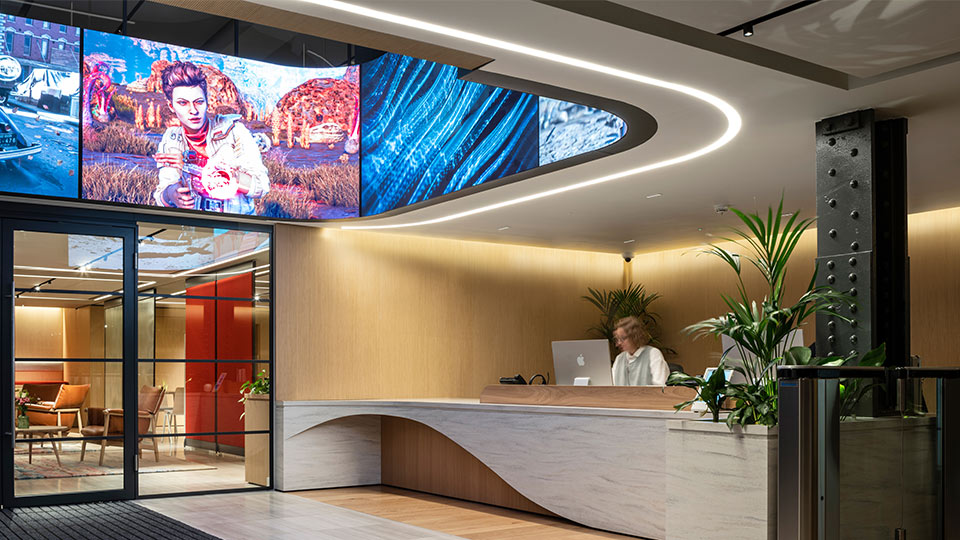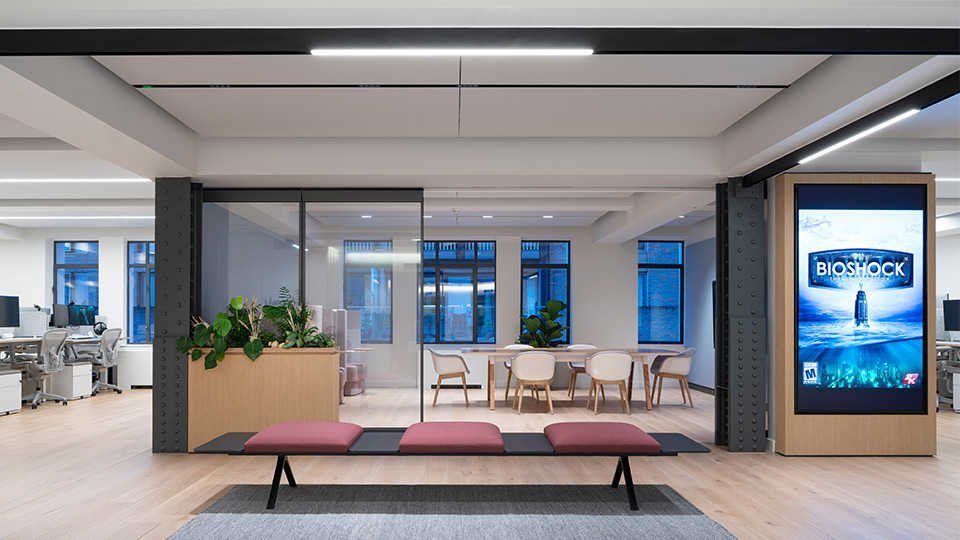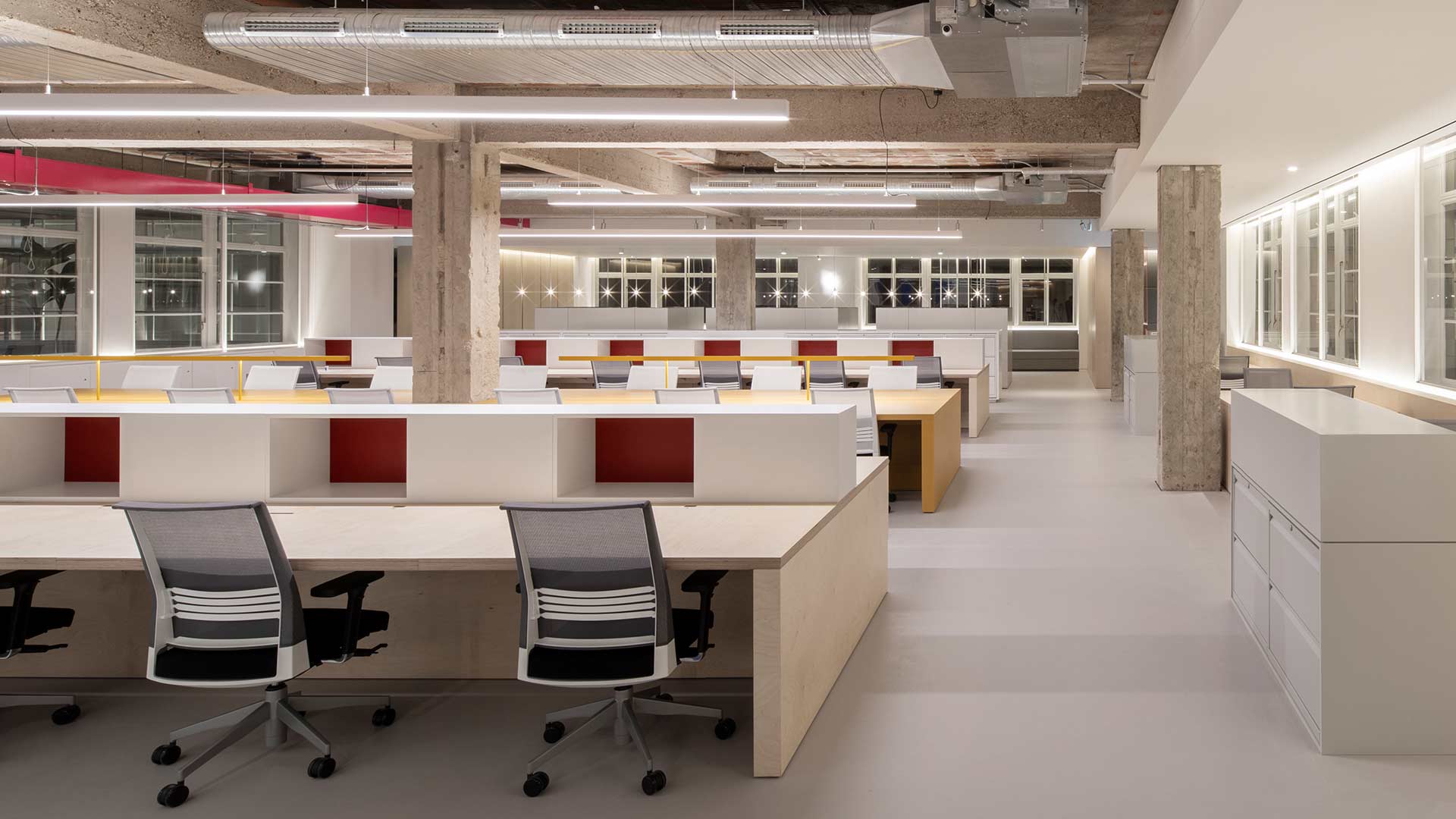In the light of experience
The conversation around the future of the workspace continues. Whilst our instinct is to try and predict where things are headed, the reality is that the workplace is now a multifaceted experience and flexibility is here to stay. People are continuing to choose where and how they want to work. Employers are listening and responding.

Image © David Churchill
The product of this shift is a wave of creative thinking in the commercial sector. Companies are embracing versatility to accommodate new ways of working. We’ve also seen an influx of imaginative schemes that take inspiration from the hospitality industry, a sector well-versed in the power of crafting an experience to draw people in. Now that experience is an essential part of the picture, light can be a unifying force in the workplace, helping to engage people, elevate the mood, and promote wellbeing.
Video conferencing is here to stay, and no longer confined to the board room.
Employees are now joining calls in break out areas and at their desks, so the way that we light a person’s video conference needs to be considered in different contexts. Good quality lighting on a call requires a balance of ambient and cylindrical light to provide contrast and enable good facial recognition, and high quality fittings to mitigate the possibility of flicker.
Communal areas are the lifeblood of the office and help to create a destination that people want to spend time in.
Lighting design helps people emotionally connect to a space, so different layers and tones of light can create mood transitions across dwell points, auditoriums, event areas, and cafes, while lighting controls help animate a scheme and optimise the design.

Companies need to think outside their own four walls when it comes to the lighting.
Quality lighting should extend beyond the office to maintain a professional persona when people are remote working. It’s also central to a company’s wellbeing policy because employees may experience glare and discomfort if their home setup isn’t fit for purpose.
A biophilic approach can be used to support wellbeing, improve comfort, and help reduce stress.
We should always default to daylight first, but in the absence of frequent exposure to natural light, artificial light should be used to achieve the full spectrum of light we experience in nature. A mix of direct and indirect, diffuse and dynamic layers of light can go some way to mimic daylight patterns and natural circadian rhythms.
Read the full Nulty+ Trends in Lighting Design 2023 report here.


